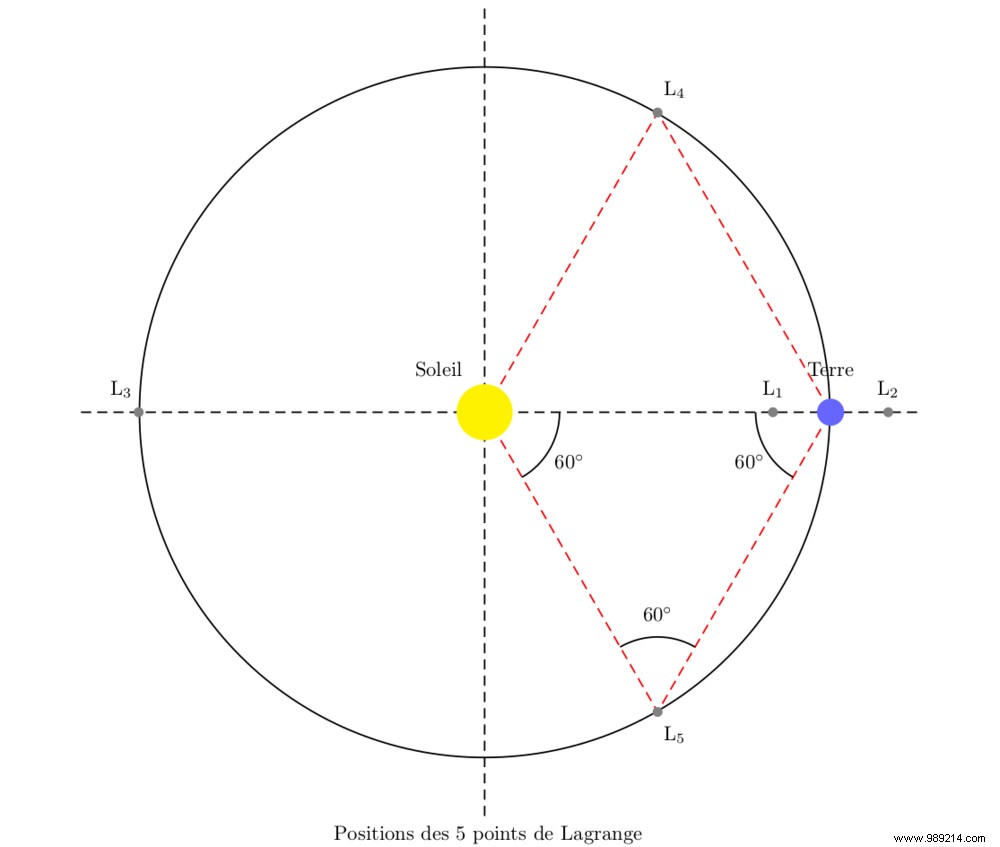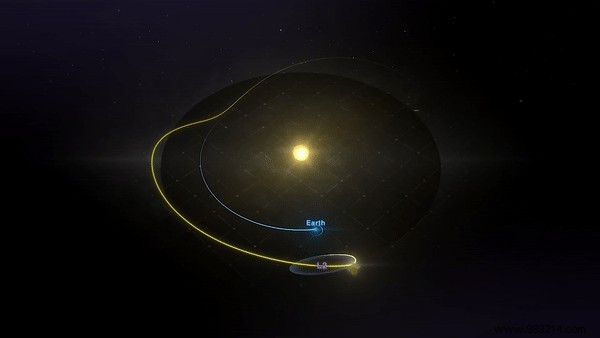The James Webb Telescope has just fired its thrusters to reach its final address:Lagrange point 2. After adjusting its enormous mirror and calibrating its instruments, the most powerful space observatory ever launched will be able to start working more than 1.5 million kilometers from Earth.
It's done! This Monday, January 24, ground operators performed a final burn of its thrusters to keep the James Webb Telescope in position around Lagrange Point 2 (L2), where the gravitational forces of the Earth and the Sun balance each other. This orbit will keep the telescope in the same position relative to the Earth and the Sun and will ensure that the sun will not be eclipsed by the Earth from the telescope's perspective , which could affect the thermal stability of the instruments.
As a reminder, the observatory was launched a month ago, on December 25, 2021 from Guyana.
Mission operators will continue to adjust the telescope's orbit around point L2 by briefly firing its thrusters approximately once every 21 days , according to NASA. However, even with these small adjustments, the observatory's fuel reserves should far exceed the planned ten-year mission duration.


Now in orbit, the telescope will have to undergo further tests and alignments over the next few months. If the eighteen segments of its giant mirror were deployed successfully on January 8, the team still has to perform several maneuvers to align them perfectly. To help them, engineers will focus on an isolated bright star.
In the end, the proposed space between each segment should be less than about 1/5000 of the diameter of a human hair , so that they can act as a single monolithic mirror 6.5 m wide.
Once these adjustments are complete, the James Webb Telescope will be able to observe the cosmos in the infrared regions of the electromagnetic spectrum, enough to detect faint signals from the first stars and galaxies of the Universe, and penetrate the dense dust clouds that shroud the formation of stars and planets. These first scientific operations should finally begin in about six months.
According to Joel Primack, University of California, Santa Cruz, interviewed by Newsweek, a series of "first light" images could be shared by NASA as soon as this summer. Other better quality images will follow later.